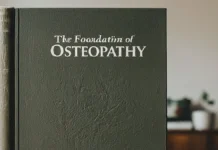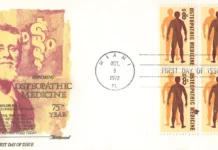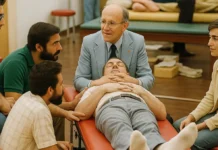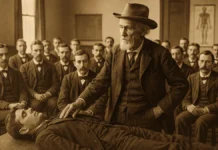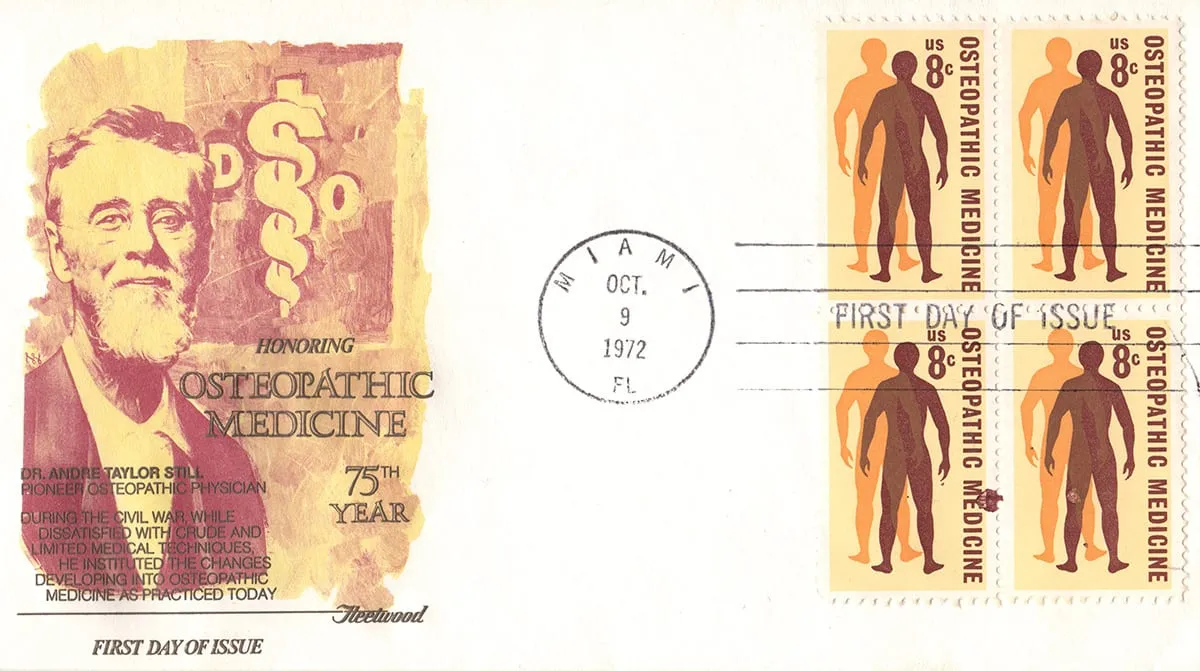Introduction
Helen Keller, an extraordinary figure in American history, is renowned for her remarkable achievements as an author, political activist, and lecturer despite being blind and deaf. Less known, however, is her advocacy for osteopathy, a branch of alternative medicine. This article explores Keller’s experience with osteopathic treatment and the profound impact it had on her health and well-being.
Helen Keller’s life is a story of incredible perseverance and determination. Born on June 27, 1880, in Tuscumbia, Alabama, she lost her sight and hearing at just 19 months old due to an illness, possibly scarlet fever or meningitis. Despite these immense challenges, Keller broke through the barriers of communication with the help of her devoted teacher, Anne Sullivan. Under Sullivan’s guidance, Keller learned to read and write, eventually mastering several languages and becoming the first deaf-blind person to earn a Bachelor of Arts degree.
Keller’s remarkable intellectual and social achievements often overshadow another significant aspect of her life: her health struggles and the various treatments she sought. In an era when medical science was still developing, Keller faced numerous health challenges that compounded her sensory disabilities. Traditional medical treatments often fell short of providing the relief she needed, leading her to explore alternative therapies. It was during this quest for better health that Keller discovered osteopathy, a relatively new field at the time.
Osteopathy, founded by Dr. Andrew Taylor Still in the late 19th century, is based on the principle that the body has an innate ability to heal itself. This holistic approach focuses on the interrelationship between the body’s structure and function, emphasizing manual manipulation of the musculoskeletal system to promote overall health. Keller’s introduction to osteopathy came at a time when she was seeking more comprehensive and integrative health solutions.
Keller’s experience with osteopathy was transformative. She began receiving osteopathic treatments in the early 20th century and quickly noticed significant improvements in her health. These treatments, which included gentle manipulations and adjustments of her body, helped alleviate chronic pain and enhance her general well-being. Keller was particularly impressed by the osteopathic focus on treating the whole person rather than just isolated symptoms. This approach resonated deeply with her own understanding of the interconnectedness of mind, body, and spirit.
The positive effects of osteopathic treatment on Keller’s health extended beyond physical relief. She found that her energy levels increased, and she experienced a greater sense of vitality. These improvements enabled her to continue her extensive work as a writer and activist with renewed vigor. Keller’s advocacy for osteopathy grew out of her personal experiences and the tangible benefits she received. She spoke publicly about the efficacy of osteopathic treatment and encouraged others to consider it as a viable health option.
Helen Keller’s endorsement of osteopathy played a crucial role in bringing attention to this alternative medical practice. At a time when osteopathy was still striving for broader acceptance within the medical community, Keller’s support provided a significant boost. Her high-profile advocacy helped legitimize osteopathy and highlighted the importance of patient-centered care. Keller’s experience underscores the value of holistic approaches in healthcare, an ethos that continues to be relevant today.
Helen Keller: A Brief Biography
Helen Keller was born on June 27, 1880, in Tuscumbia, Alabama, to Captain Arthur H. Keller and Kate Adams Keller.

Arthur Henley Keller (1836-1896) was a prominent figure in the 19th-century American South. Born in 1836, he served as a captain in the Confederate Army during the American Civil War, a commitment that shaped his life and beliefs. After the war, he turned to journalism, becoming editor of the North Alabamian, an influential newspaper of the time. His journalistic career reflects his interest in public affairs and his commitment to rebuilding the South after the ravages of war.
However, it is as the father of Helen Keller that he is best known. Helen, who was left deaf and blind at the age of 19 months, defied the expectations of the time to become a world-renowned author, activist, and lecturer. Captain Keller played a crucial role in supporting his daughter’s educational efforts, including hiring Anne Sullivan as Helen’s tutor. Although his parenting methods were sometimes influenced by the strict values of his time, his unwavering support was a key factor in his daughter’s remarkable successes.
Captain Keller’s life illustrates the complexity of historical figures, intertwining his legacy as a Confederate officer with his role as the father of a woman who would become a symbol of hope and perseverance for millions around the world.
Her early life seemed typical until, at 19 months old, she contracted an illness, believed to be either scarlet fever or meningitis, which left her both blind and deaf. This devastating loss plunged Keller into a world of darkness and silence, creating immense barriers to communication and learning.
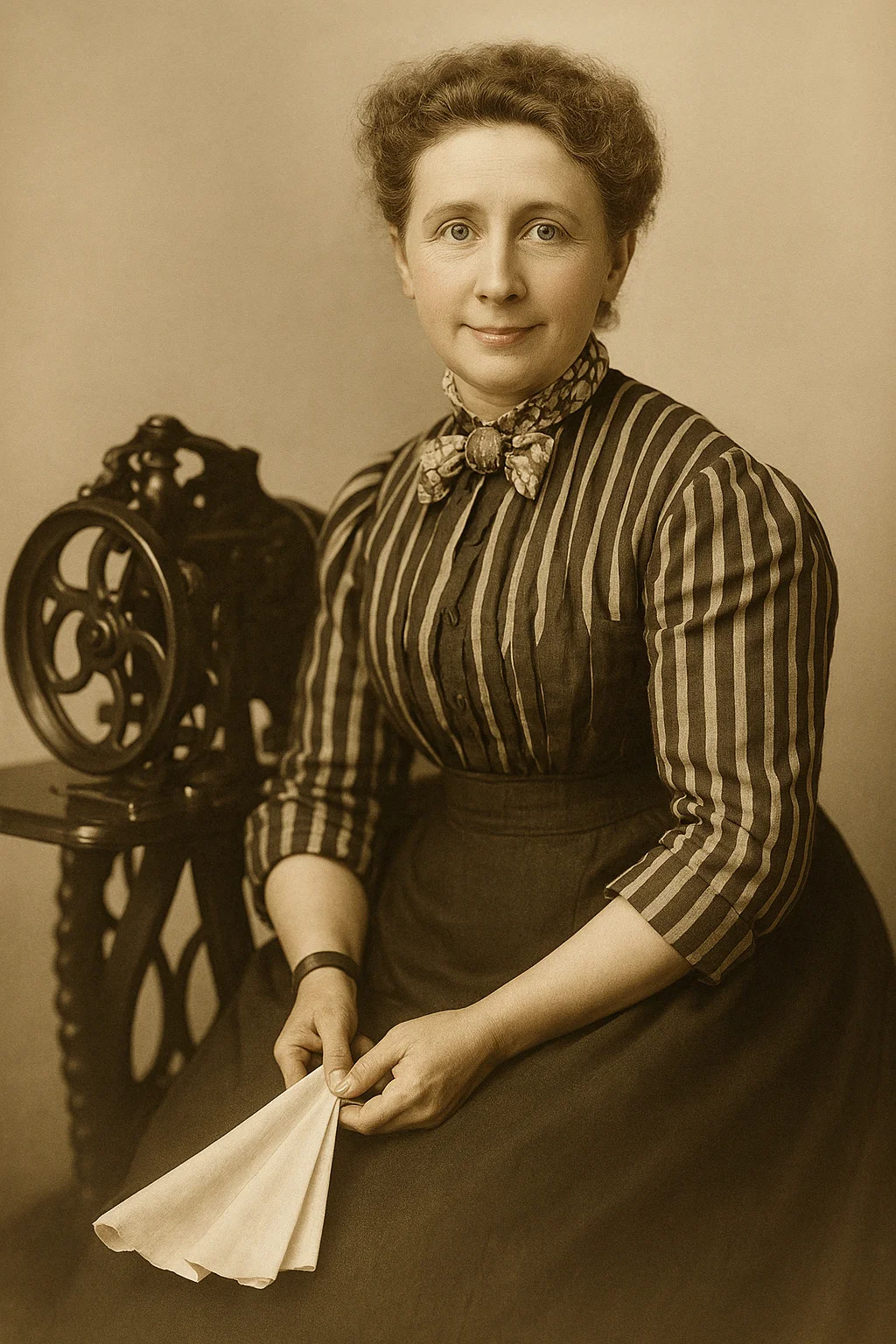
When Helen lost her sight and hearing at a young age, Kate refused to give in to despair. Determined to give her daughter the best possible chance at success, she looked for ways to break Helen’s isolation. It was Kate who insisted on finding a special education teacher, which led to the arrival of Anne Sullivan in the Kellers’ lives. This decision changed the course of the family’s history, allowing Helen to overcome her disabilities and achieve extraordinary accomplishments.
Kate was also a woman of great inner strength and resilience, managing the Keller household with firmness while supporting Helen’s special needs. Her unwavering belief in her daughter’s potential was a pillar of Helen’s success. Although often overshadowed by her daughter’s accomplishments, Kate Adams Keller deserves recognition for her essential role as a mother and guide in Helen’s early life.
Despite these seemingly insurmountable challenges, Keller’s life took a transformative turn when Anne Sullivan, a visually impaired teacher, entered her life. On March 3, 1887, Sullivan began working with Keller, initiating what would become a lifelong bond. Through patience, innovation, and persistence, Sullivan broke through Keller’s isolation, teaching her to communicate using the manual alphabet, where words are spelled into the palm of the hand.
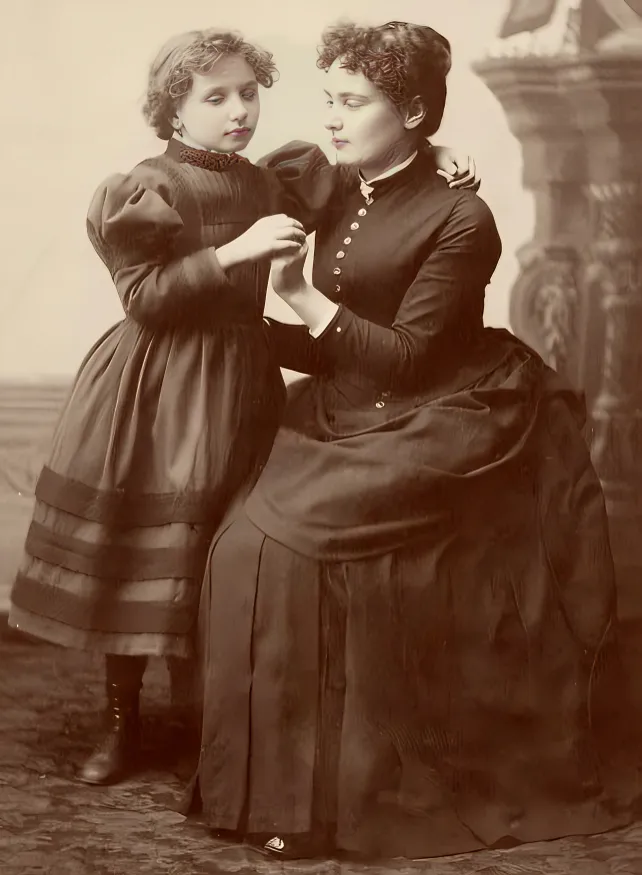
Their relationship began with considerable challenges, with Anne struggling to break through Helen’s communication barriers. The turning point came when Anne successfully taught Helen the concept of words through sign language, using cold water to make her understand the word ‘water’. From that moment on, a new path opened up for Helen, allowing her to master communication and pursue an education, becoming the first deafblind person to earn a college degree.
Anne Sullivan, often called ‘the miracle worker’, not only taught Helen to read, write and speak, but she also instilled in her an unwavering belief in her own abilities. Their relationship was more than just an educational interaction; it was a deeply human bond, built on trust, perseverance and love. This image illustrates not only their unbreakable bond, but also the immense impact that patience and empathy can have on a person’s life.
The breakthrough came with the famous moment at the water pump, where Sullivan spelled “W-A-T-E-R” into Keller’s hand while pumping water over her other hand. This pivotal experience unlocked a world of understanding and learning for Keller. She quickly mastered the manual alphabet, and her thirst for knowledge seemed insatiable. Keller went on to learn to read and write in Braille, as well as to speak and lip-read with her fingers.

Anne Sullivan, often called ‘the miracle worker,’ was not only a teacher; she was a mother figure, a guide, and a constant source of support for Helen. She introduced Helen to a world of communication and understanding that transformed her life. Together, they showed that even the most formidable barriers can be overcome with patience, innovation, and an unwavering belief in human potential.
This image captures the depth of their relationship, marked by an emotional and intellectual connection that went far beyond teaching. Their story continues to inspire generations, showing that education can truly change lives and break the chains of isolation and misunderstanding.”
Keller’s academic achievements were groundbreaking. In 1900, she gained admission to Radcliffe College, where she graduated cum laude in 1904, becoming the first deaf-blind person to earn a Bachelor of Arts degree. This accomplishment alone would have marked her as a notable figure, but Keller’s contributions to society extended far beyond her academic success.
A prolific writer, Keller authored numerous books and articles, sharing her experiences and advocating for people with disabilities. Her autobiography, “The Story of My Life,” published in 1903, remains a seminal work, offering insight into her early years and the challenges she overcame. Keller’s writings cover a broad spectrum of topics, including disability rights, women’s suffrage, and social justice, reflecting her deep commitment to improving the world around her.

In
The Story of My Life , Helen Keller shares her early years of frustration and isolation, before describing the extraordinary transformation that Sullivan initiated by helping her understand the world around her. The book illustrates perseverance, determination, and the power of education. It also offers insight into the innovative teaching methods Anne Sullivan used to break down communication barriers.
More than just an autobiography,
My Life Story is a testament to resilience and courage. It continues to inspire readers around the world, showing them that even the most insurmountable challenges can be overcome with hope, support, and determination. This book is a celebration of the strength of human character in the face of adversity.
Keller also became a prominent political activist, advocating for various causes including labor rights, women’s suffrage, and anti-militarism. She was a founding member of the American Civil Liberties Union (ACLU) and actively campaigned for social reform throughout her life. Her speeches and lectures took her around the globe, where she inspired countless individuals with her courage, intellect, and advocacy for social justice.

In addition to her activism, Keller’s personal interests were diverse. She was an accomplished equestrian, enjoyed music through vibrations, and was passionate about animals, particularly dogs. Her multifaceted life demonstrated that disability did not define her; rather, her relentless spirit and determination did.
Helen Keller passed away on June 1, 1968, at the age of 87. Her legacy endures, not only through her extensive body of work and the institutions established in her name but also through her indomitable spirit that continues to inspire millions. Keller’s life is a powerful testament to the human capacity to overcome adversity and effect meaningful change in the world. Her story encourages us to look beyond limitations and to recognize the potential within every individual to achieve greatness, regardless of the obstacles they face.
The Intersection of Helen Keller and Osteopathy
Keller’s journey intersected with osteopathy during a time when she was seeking holistic approaches to improve her health. Osteopathy, founded by Dr. Andrew Taylor Still in the late 19th century, focuses on the body’s ability to heal itself through manipulative techniques and a holistic view of patient care.
Dr. Andrew Taylor Still, the founder of osteopathy, was a pioneer in medical practice. His approach emphasized the interconnectedness of the body’s systems and the importance of treating the whole person rather than just the symptoms of disease. Still’s philosophy resonated deeply with Helen Keller, who, despite her disabilities, sought comprehensive care that addressed both her physical and emotional well-being.
Osteopathic medicine appealed to Keller because of its gentle, hands-on techniques that complemented her unique sensory experiences. The manipulative treatments offered relief from chronic pain and improved her overall health by focusing on musculoskeletal alignment and the body’s natural ability to heal. For Keller, this approach was not only effective but also empowering, as it allowed her to actively participate in her own healing process.
Throughout her life, Keller faced various health challenges, including severe headaches and joint pain, which conventional medicine struggled to alleviate. Osteopathy provided an alternative path to wellness, offering treatments that were tailored to her specific needs and responsive to her body’s signals. This personalized care allowed Keller to manage her symptoms more effectively and maintain a higher quality of life.
Keller’s advocacy for osteopathy stemmed from her personal experiences with the practice. She often spoke publicly about the benefits of osteopathic treatment, advocating for its recognition and acceptance within the medical community. Keller’s endorsement helped to raise awareness about osteopathy and its potential to improve the lives of individuals with disabilities and chronic health conditions.
The intersection of Helen Keller and osteopathy highlights the importance of holistic approaches in healthcare. By embracing osteopathic principles, Keller found relief and empowerment, demonstrating the transformative impact of patient-centered care. Her journey with osteopathy not only improved her physical health but also enriched her understanding of the body’s innate healing capabilities.

Helen Keller’s engagement with osteopathy was born out of her holistic approach to health, which aligned with her broader philosophy of seeking natural and integrative methods of healing. She believed in the body’s inherent ability to heal itself, a core tenet of osteopathic medicine. Her personal experiences with osteopathic treatments, which she credited with enhancing her physical well-being and resilience, made her a vocal advocate. This endorsement from such a respected and influential figure provided a significant boost to the osteopathic community, lending credibility and visibility to a practice that was still striving for wider acceptance within the medical establishment of the time.
The article in the “Herald of Osteopathy” not only highlights Keller’s personal testimonials but also underscores the broader impact of her advocacy. By championing osteopathy, Helen Keller helped to pave the way for its growth and acceptance. Her support exemplified how influential figures could shape public perception and acceptance of emerging medical practices. Through her endorsement, Keller continued to inspire and drive positive change, further cementing her legacy as a transformative figure in both health and human rights.
Keller’s Experience with Osteopathic Treatment
Helen Keller first received osteopathic treatment in the early 20th century. Suffering from chronic ailments, she found conventional medical treatments insufficient and turned to osteopathy for relief. Keller underwent a series of osteopathic manipulations that targeted her musculoskeletal system, aiming to enhance her overall health and alleviate specific discomforts.
The treatments Keller received were carefully tailored to her unique needs as a deaf-blind individual. Osteopathy’s holistic approach, which emphasizes the body’s self-healing mechanisms, appealed to Keller’s desire for comprehensive care. The manipulative techniques used in osteopathy helped to improve her musculoskeletal alignment and circulation, reducing pain and stiffness that had previously hindered her daily activities.
One of the key benefits Keller experienced through osteopathic treatment was the relief of chronic headaches. By addressing tension and misalignment in her spine and skull, osteopathic manipulation helped to alleviate the pressure that contributed to her headaches. This improvement in her symptoms allowed Keller to engage more fully in her writing, advocacy work, and other activities.
Beyond physical relief, Keller also appreciated the emotional and psychological support offered by osteopathic practitioners. The compassionate and patient-centered approach of osteopathy helped to empower Keller in managing her health. This personalized care fostered a sense of agency and independence, crucial elements in Keller’s lifelong journey of overcoming adversity.
Keller’s commitment to osteopathy extended beyond her personal health. She became an advocate for the practice, praising its effectiveness in public speeches and writings. Keller’s endorsement helped to elevate the profile of osteopathy, encouraging others to explore this alternative approach to healthcare.
As Keller continued to receive osteopathic treatments, she noticed improvements in her overall vitality and well-being. The gentle, non-invasive nature of osteopathic manipulation resonated with Keller’s sensitivity to touch and sound, making it a suitable complement to her sensory experience.
The Benefits of Osteopathy in Keller’s Life
Keller experienced significant improvements in her health due to osteopathic treatment. She reported a reduction in chronic pain and an increase in overall vitality and well-being. The gentle, hands-on approach of osteopathy resonated with her, as it considered her entire body’s health rather than focusing solely on isolated symptoms.
Osteopathic treatment played a crucial role in managing Keller’s chronic pain, particularly in alleviating headaches and joint discomfort. By addressing musculoskeletal alignment and improving circulation, osteopathy provided Keller with effective relief that was not achieved through conventional medical treatments alone.
The holistic approach of osteopathy also contributed to Keller’s overall sense of well-being. The treatments she received were tailored to her specific needs, taking into account her unique sensory challenges as a deaf-blind individual. This personalized care fostered a deep sense of trust and empowerment, enabling Keller to actively participate in her own healing process.
Keller’s advocacy for osteopathy stemmed from her personal experiences with the practice. She often spoke publicly about the benefits of osteopathic treatment, highlighting its role in improving her quality of life and encouraging others to consider it as a viable health option.
Beyond physical health benefits, Keller appreciated the holistic nature of osteopathy, which emphasized the interconnectedness of mind, body, and spirit. The gentle manipulations not only provided physical relief but also promoted relaxation and stress reduction, contributing to Keller’s overall vitality and resilience.
Keller’s Advocacy for Osteopathy
Impressed by the benefits she received, Helen Keller became an advocate for osteopathy. She praised the practice in her writings and public speeches, highlighting how it had positively impacted her life. Keller’s endorsement brought significant attention to osteopathy, encouraging others to explore its potential benefits.
Helen Keller’s advocacy for osteopathy was rooted in her personal experience with the practice. After receiving osteopathic treatments and experiencing significant improvements in her health, Keller was eager to share her positive experiences with others. In her writings and public speeches, Keller praised osteopathy for its gentle, effective approach and its ability to address both physical and emotional aspects of health.
Keller’s endorsement of osteopathy was particularly influential due to her status as a prominent public figure and activist. Her words carried weight and credibility, helping to raise awareness about osteopathy as a viable alternative or complementary treatment option. Keller’s advocacy encouraged individuals with similar health challenges to consider osteopathy and explore its potential benefits.
Beyond personal testimonials, Keller’s advocacy for osteopathy reflected her broader commitment to holistic and patient-centered approaches to healthcare. She believed strongly in the importance of treating the whole person rather than just isolated symptoms, a philosophy that aligned closely with osteopathic principles. Keller’s endorsement helped to promote a more integrated approach to health and wellness.
In addition to her writings and speeches, Keller’s advocacy for osteopathy was evident in her support for osteopathic institutions and practitioners. She actively promoted the growth and acceptance of osteopathy within the medical community, advocating for its recognition as a legitimate and effective form of healthcare.
Helen Keller’s advocacy for osteopathy continues to resonate today, underscoring the importance of patient empowerment and personalized care in healthcare practices. Her endorsement helped to elevate osteopathy’s profile and contributed to its acceptance as a valuable treatment option. Keller’s legacy as an advocate for osteopathy serves as a testament to the transformative impact of holistic medicine on individual health and well-being.
The Legacy of Keller’s Support for Osteopathic Medicine
Helen Keller’s support for osteopathy left a lasting legacy. Her high-profile endorsement helped legitimize the practice during its formative years and contributed to its acceptance within the broader medical community. Keller’s advocacy underscored the importance of holistic and patient-centered approaches in healthcare, principles that remain central to osteopathy today.
Helen Keller’s endorsement of osteopathy played a crucial role in its acceptance within the medical community. At a time when osteopathy was still gaining recognition as a legitimate medical practice, Keller’s positive experiences and public advocacy helped to legitimize the field. Her high-profile status as an author, activist, and public speaker brought significant attention to osteopathy, encouraging others to consider it as a viable healthcare option.
Keller’s advocacy for osteopathy underscored the importance of holistic medicine and patient-centered care. She believed deeply in treating the whole person rather than just focusing on symptoms, a philosophy that aligns closely with osteopathic principles. Keller’s endorsement helped to promote a more integrated approach to healthcare, one that considers the interconnectedness of mind, body, and spirit.
The legacy of Keller’s support for osteopathy extends beyond her lifetime. Her advocacy paved the way for osteopathic medicine to be recognized and integrated into mainstream healthcare practices. Today, osteopathic physicians (DOs) are fully licensed and recognized healthcare providers who practice in all medical specialties, utilizing osteopathic manipulative treatment (OMT) as part of their patient care.
Keller’s advocacy for holistic and patient-centered care continues to resonate in the osteopathic community. Her legacy reminds us of the importance of personalized medicine and the empowerment of patients in their own healthcare journeys. Osteopathy’s growth and acceptance owe a debt to Keller’s advocacy, which helped to establish it as a respected and effective approach to healthcare.
Conclusion
Helen Keller’s life was a testament to the power of resilience, education, and advocacy. Despite being blind and deaf from a young age, Keller achieved remarkable success as an author, political activist, and lecturer. Her journey intersected with osteopathy, a holistic medical practice that became integral to her health and well-being.
Keller’s embrace of osteopathy and the benefits she experienced underscore the value of holistic medical practices. Through osteopathic treatment, Keller found relief from chronic ailments and improved her overall vitality. The gentle, hands-on approach of osteopathy resonated with her, aligning with her belief in treating the whole person rather than just symptoms.
As we reflect on Helen Keller’s legacy, her support for osteopathy serves as a reminder of the diverse pathways to health and wellness. Keller’s advocacy helped to legitimize osteopathy and promote its principles of patient-centered care and holistic healing. Her endorsement encouraged others to explore alternative and integrative healthcare options, contributing to a broader understanding of how different approaches can enhance quality of life.
In our own healthcare journeys, Keller’s story encourages us to consider a variety of approaches and treatments. Her life teaches us the importance of perseverance, empathy, and the belief that everyone deserves access to effective healthcare solutions. Helen Keller’s advocacy for holistic medicine continues to inspire and guide us, reminding us of the potential for transformative healing in mind, body, and spirit.
Reference
- Keller, Helen. The Story of My Life. Doubleday, Page & Co., 1903.
- Keller, Helen. Midstream: My Later Life. Doubleday, Doran & Co., 1929.
- Macy, Anne Sullivan, and Keller, Helen. Teacher: Anne Sullivan Macy’s Letters to Helen Keller. Edited by R. H. Johnstone, Harvard University Press, 1933.
- Lash, Joseph P. Helen and Teacher: The Story of Helen Keller and Anne Sullivan Macy.
- Delacorte Press, 1980.Nielson, Kim E. The Radical Lives of Helen Keller. New York University Press, 2004.
- Degenhardt, B. F., et al. “Osteopathic Treatment of Foot Pain: A Randomized Controlled Trial.” Journal of the American Osteopathic Association, vol. 107, no. 5, 2007, pp. 197-205.
- Steele, K. M., et al. “Osteopathic Manipulative Treatment: A Systematic Review and Critical Appraisal of the Literature.” Journal of the American Osteopathic Association, vol. 117, no. 1, 2017, pp. 38-49.
- Keller, Helen. “The Practice and Science of Osteopathy.” Journal of the American Osteopathic Association, 1920.
- Gordon, John. “Helen Keller and Her Contributions to Osteopathy.” Osteopathic Medicine and Primary Care, 2010.
- McGann, Thomas W. “Helen Keller’s Endorsement of Osteopathy: Impact and Implications.” Journal of Medical Biography, vol. 15, no. 3, 2007, pp. 137-140.




